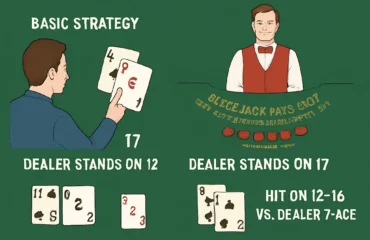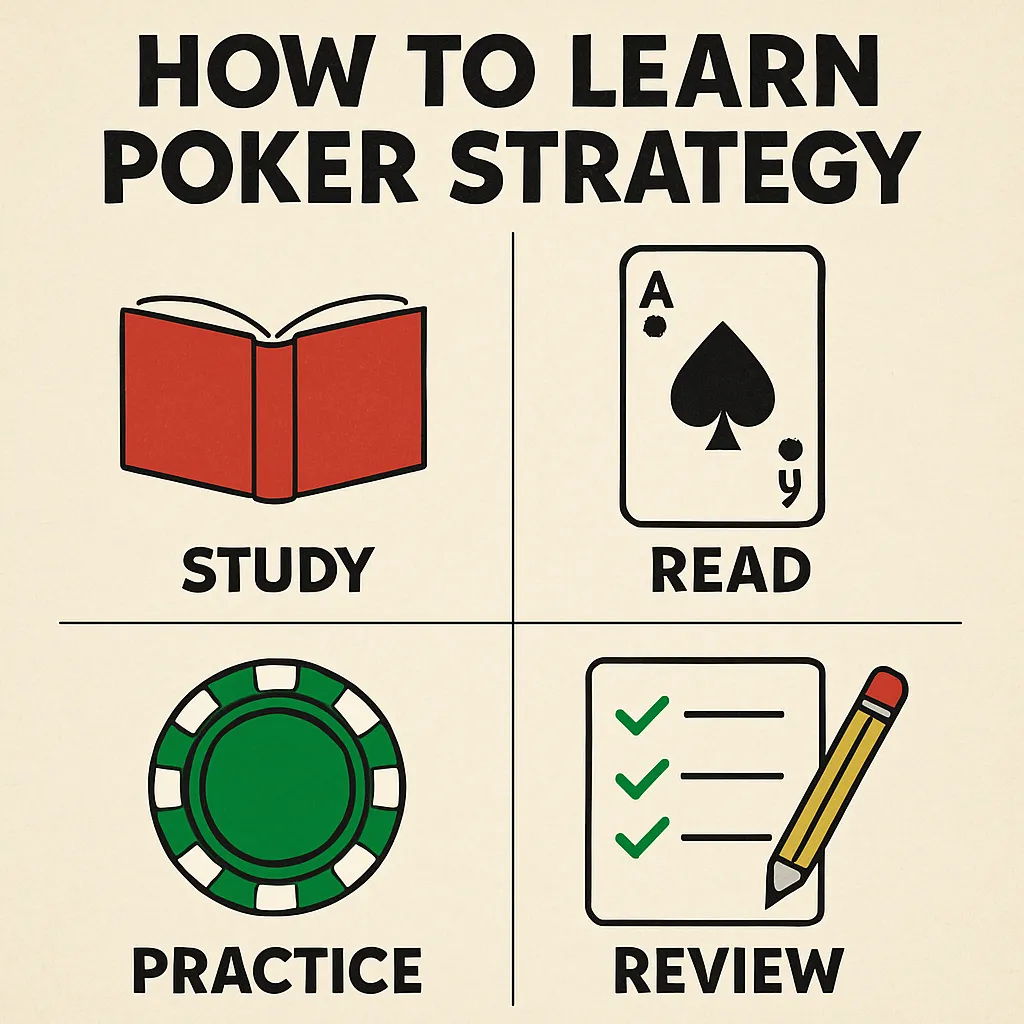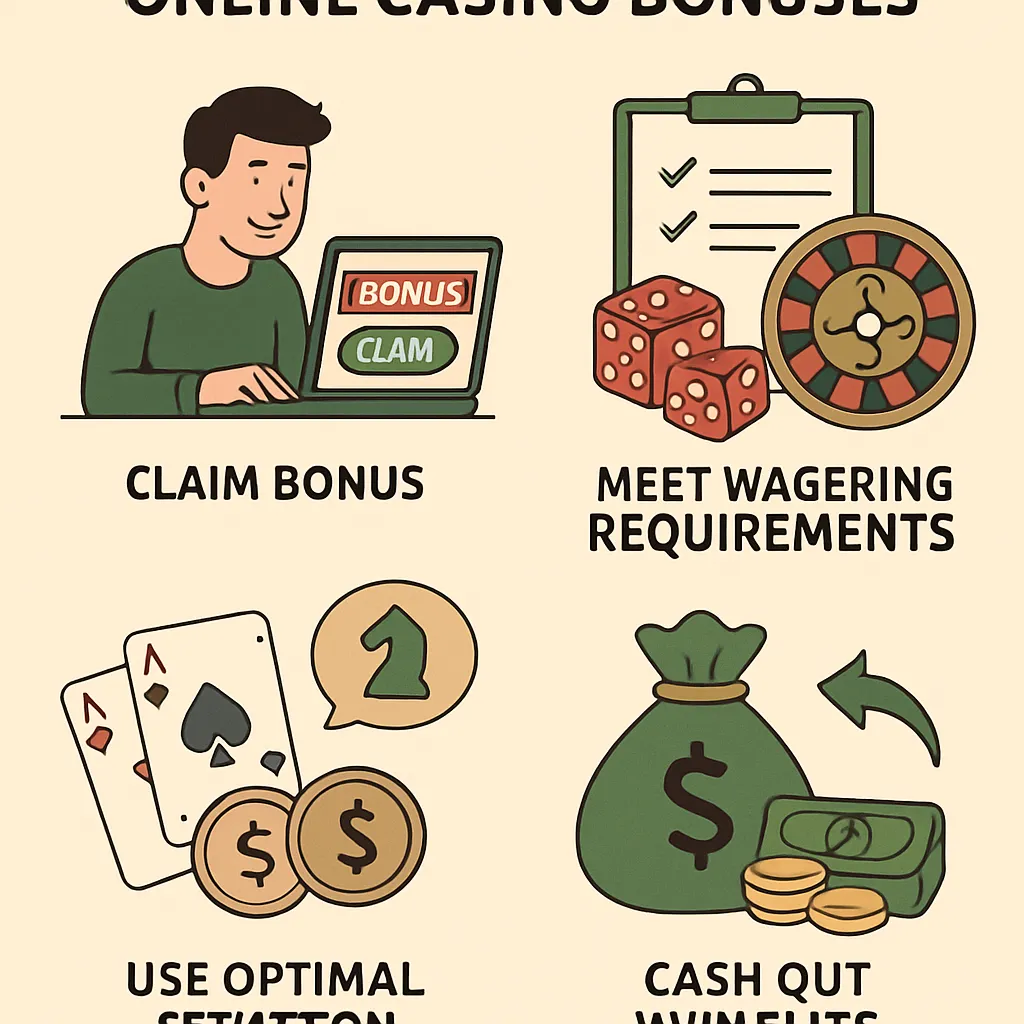How to play blackjack at a casino: tips and strategy
2025-07-19

The estimated reading time for this post is 384 seconds
Blackjack, sometimes called “21,” is a casino card game where the goal is to beat the dealer’s hand without exceeding a total of 21. Players are each dealt two cards initially and may choose to “hit” (take another card) or “stand” (keep their current total). Face cards (Jack, Queen, King) count as 10, Aces can count as 1 or 11, and all other cards are worth their face value. The appeal of blackjack lies in its blend of luck and skill: while the cards you’re dealt are random, your decisions can drastically impact the outcome. Casino blackjack tables usually accommodate up to seven players, and each player competes only against the dealer, not against each other. The dealer follows strict rules that govern when they must hit or stand, making the game’s strategic calculations more predictable.
Rules of Blackjack you Need to Know
Before sitting down at a blackjack table, you should familiarize yourself with the core rules that govern play. First, if your initial two-card hand equals 21 (an Ace plus a 10-value card), you have a “blackjack” and typically win 1.5 times your bet, unless the dealer also has blackjack. Second, if the dealer’s face-up card is an Ace, players are offered “insurance”—a side bet that pays 2:1 if the dealer has blackjack. Third, you may choose to “split” pairs of equal value cards into two separate hands, doubling your stake but also your potential wins or losses. Fourth, “double down” allows you to double your original bet in exchange for committing to stand after exactly one more card. Finally, some tables allow “surrender,” giving you the option to forfeit half your bet and quit the hand early. Understanding these rules will help you make informed decisions and form the foundation of a solid blackjack strategy.
Essential Blackjack Tips for Beginners
When to Hit or Stand
Knowing when to hit or stand is the cornerstone of basic blackjack strategy. As a rule of thumb, you should hit when your hand totals 8 or less, and stand when it totals 17 or more. For hands valued between 12 and 16—known as “stiff” hands—you should consider the dealer’s upcard: stand if the dealer shows 2 through 6, and hit against 7 through Ace. This reduces the dealer’s chances of making a strong hand when they must draw on stiff totals. Practicing this fundamental advice will reduce the house edge significantly. Remember, the goal is not always to chase a perfect hand but to minimize losses in unfavorable situations. Always observe dealer behavior and table pace to ensure you make timely decisions.
The Importance of Knowing When to Double Down
Doubling down can be a powerful tool in your blackjack arsenal when used correctly. The idea is to increase your wager when you have a statistical advantage. Common scenarios for doubling down include when your two-card total is 9, 10, or 11, and the dealer’s upcard is weak (typically 2 through 6). For example, if you have an 11 and the dealer shows a 5, doubling down gives you an extra card with the greatest chance to reach a strong total. However, avoid doubling down on soft hands (hands containing an Ace valued as 11) unless you’re familiar with advanced strategy charts. Misusing the double down option can quickly deplete your bankroll, so practice identifying the right moments before increasing your stakes in live play.
Understanding Table Etiquette
Beyond strategy, proper table etiquette enhances your experience and keeps the game running smoothly for everyone. Always wait for the dealer to finish paying winners before collecting your cards, and avoid touching your chips once they’re in front of you to indicate your bet. Use clear hand signals (tap or wave) to communicate hit or stand decisions, and never verbally shout instructions. Be respectful to other players and the dealer—excessive chatter or criticism can create a tense atmosphere. Dress appropriately according to the casino’s dress code, as some high-end establishments enforce stricter guidelines. Finally, tip the dealer when you win big; it encourages good service and fosters goodwill at the table.
Advanced Blackjack Strategies
Basic Strategy Chart Overview
A basic strategy chart provides the mathematically optimal decision for every possible player hand against every dealer upcard. While memorizing the entire chart can seem daunting, focusing on the most common scenarios is a great start. For instance, knowing that you should stand on 12 vs. dealer 4–6 but hit on 12 vs. dealer 7–Ace will cover many hands. You can find compact charts to carry in your pocket or study online before visiting the casino. Using the chart religiously can reduce the house edge to as low as 0.5%, making blackjack one of the fairest casino games available. Practice with free online simulators to internalize the chart without risking real money. Over time, you’ll rely less on the physical chart and more on intuition rooted in these basic strategy principles.
Card Counting Techniques
Card counting is an advanced blackjack strategy that tracks the ratio of high to low cards remaining in the deck to gain an edge. The most popular system, Hi-Lo, assigns a +1 value to low cards (2–6), 0 to neutral cards (7–9), and –1 to high cards (10–Ace). By maintaining a running count and dividing it by the estimated number of remaining decks (“true count”), you can adjust your bets when the count is favorable. For example, a true count of +3 might prompt you to increase your wager, as there are more high cards left. Successful card counters also vary their play to avoid detection by casino security. Note that card counting is not illegal, but casinos reserve the right to ban players they suspect of using these techniques. Start practicing in a low-stakes environment before attempting at a live casino.
Managing Your Bankroll
Effective bankroll management ensures you can weather the natural swings of luck in casino blackjack. Begin by setting a session budget that you’re comfortable losing, and divide it into smaller “buy-in” units for each round or hour of play. A common guideline is to risk no more than 1–2% of your total bankroll on any single hand to prolong your playing time. If you hit a losing streak, stick to your limit and walk away when you reach your stop-loss threshold. Conversely, plan ahead where you’ll set win goals—perhaps a 50% gain on your session bankroll—before pocketing profits and leaving the table. By treating your bankroll as a finite resource, you’ll make more disciplined decisions and avoid chasing losses. Keeping detailed notes on wins and losses can also help you analyze your performance over time.
Now that you’ve explored both beginner and advanced blackjack strategy, practice is the key to success. Test your skills in low-stakes games or free online simulators before heading to a casino. Remember to play responsibly and have fun—after all, blackjack is as much about entertainment as it is about strategy. Good luck at the tables!
To help you make quick decisions at the table, here’s a handy reference table summarizing basic actions for common hand scenarios:
| Your Hand | Dealer Upcard | Recommended Action |
|---|---|---|
| 8 or less | Any | Hit |
| 9 | 3–6 | Double Down |
| 10–11 | 2–9 | Double Down |
| 12–16 | 2–6 | Stand |
| 17 or more | Any | Stand |
With the basics covered, keep these key takeaways in mind as you approach your next blackjack game:
- Always follow basic strategy to minimize the house edge.
- Use doubling down only when you have a clear advantage.
- Observe table etiquette to ensure a smooth game.
- Practice with free simulators before risking real money.
Even experienced players can fall into traps. Watch out for these common mistakes:
- Chasing losses by increasing bets impulsively.
- Ignoring the dealer’s upcard when deciding to hit or stand.
- Overusing insurance bets, which generally favor the house.
- Failing to manage your bankroll with predefined limits.




